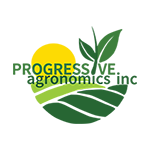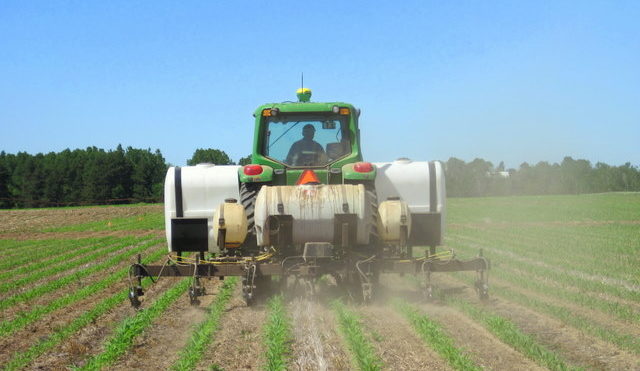What the 2020 growing season will offer is yet to be seen, but there is a strong trend toward higher precipitation levels and more significant rainfall events. What can we do to adjust our nitrogen management to better cope with the uncertainty these trends present?
Early sidedress nitrogen (N) helps reduce the risk of running short on N during the vegetative growing season. In addition, a planned early sidedress N application can offer flexibility and a wider window for application if post-plant weather conditions turn too dry or too wet. Keep in mind, this is a planned and not rescue practice.
Farmers make N application decisions based on many factors, including equipment, labor, and local availability of the various forms of N fertilizers. Tradition for tradition’s sake should not be a factor. Each farm must work within their own logistics to supply adequate N to the rapidly growing plants earlier rather than later.
Nitrogen uptake accelerates shortly after the V6 growth stage. With respect to geography, growing season, and yield potential, the average corn hybrid will take up more than 60% of its total N needs by the VT growth stage (tassel). Later in the season, N is mineralized from the soil at higher rates and remobilized from vegetative structures to the ear.
Nitrogen management must consider the 4 Rs:
- Right Source: Match crop need and reduce loss
- Right Rate: Based on crop need
- Right Time: Available during rapid uptake
- Right Place: Optimize uptake by roots
The 4 Rs address management considerations, but site characteristics (soil, cropping system, weather conditions) can also influence N use by the crop. Direct N costs or risks to crop quality of yield must also be noted.
Beck’s Practical Farm Research (PFR)® studies have found that at-plant and early sidedress applications have higher returns than later, mid-vegetative growth stage applications. PFR results indicate that an early sidedress N application reduces the risk of running out of N during rapid growth. Nitrogen must be converted from ammonium to nitrate to be available to the plant. UAN already contains nitrate, so it supplies plant-available N quickly. Urea is intermediate, and anhydrous ammonia will take the longest time to be plant available.
Benefits of early sidedress N:
- Soil N availability is optimized to meet crop needs
- Where applicable, use of a less expensive from of N, like anhydrous ammonia
- Reduced potential for fertilizer burn from broadcast granular N – smaller plants have less leaf area; ultimately, less N fertilizer will be collected in the whorl resulting in less fertilizer cosmetic injury
- Flexibility to deliver and combine with planter starter fertilizer (not seed placed) and other liquids
- Coincides with a great time to apply sulfur (S) with N sidedress application prior to peak S uptake in corn plants.
- Combined logistics at the field; fewer visits back to deliver early nutrients and biologicals
- Keeps the window of opportunity open for the next planned application or wider for rescue applications
- Less net potential damage to corn associated with ground travel as the growing point is still below ground
- Keeps the weather “too late” factor at a manageable level
Nitrogen stabilizers reduce N loss to the environment. Environmental conditions after application influence how effective N stabilizers are. The key thing to keep in mind is that a stabilizer’s primary goal is to either reduce denitrification or slow nitrification. Nitrification inhibitor stabilizers work by slowing the natural conversion process of stable soil ammonium N to the mobile nitrate N form.
A good source for available N stabilizer produces can be found at greenbook.net/product-type/nitrogen-stabilizer. Be sure to research the products to define their respective value based on your planned N management.
Each state’s extension service provides recommendations for a corn crop’s total N requirements. Use your local guidelines to make a plan, then develop a Plan B for your applications. With the goal in mind, it’s better to be a day early than a day late!
~ Mike Blaine, CCA – Field Agronomist

